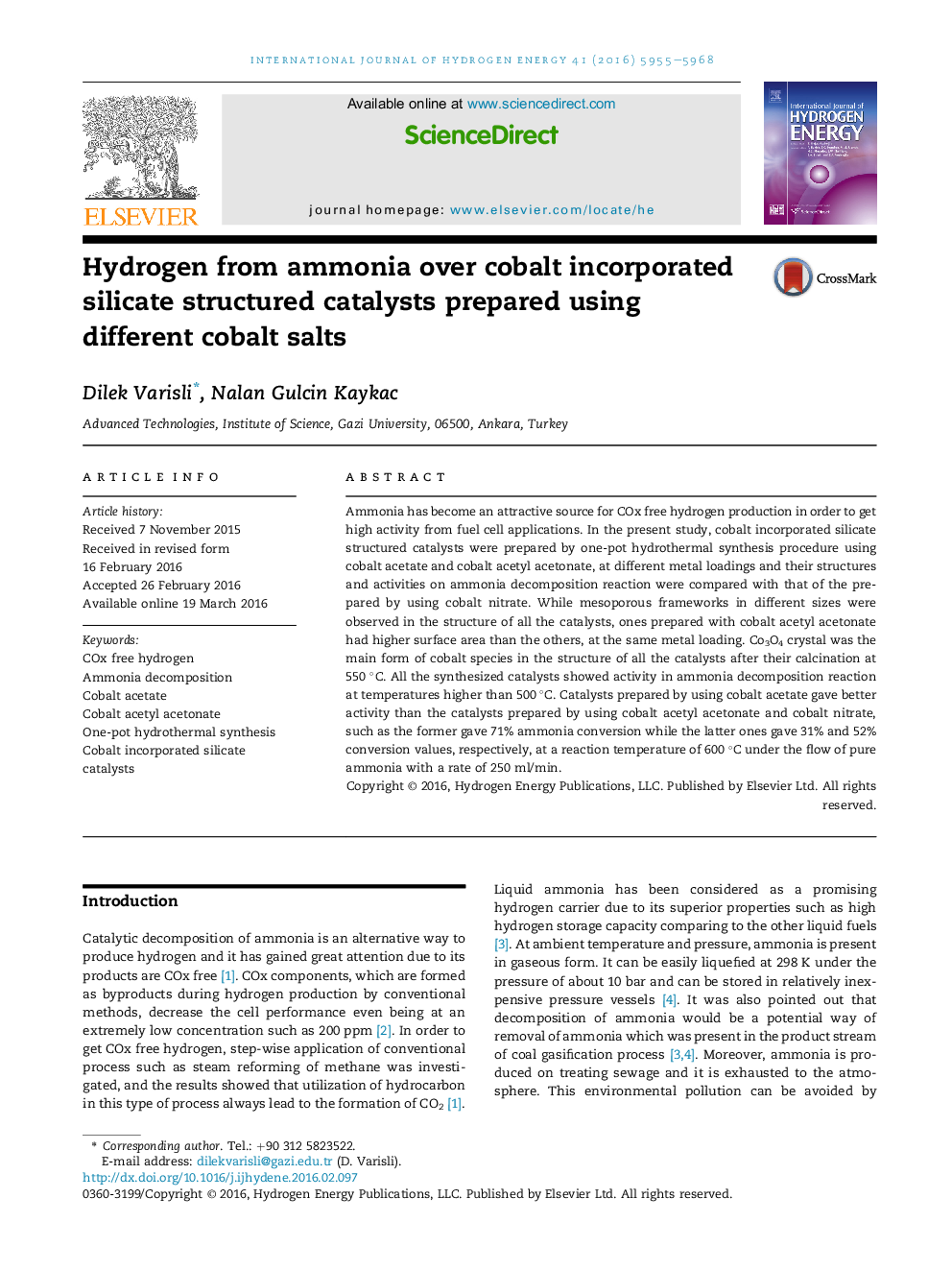| Article ID | Journal | Published Year | Pages | File Type |
|---|---|---|---|---|
| 1273599 | International Journal of Hydrogen Energy | 2016 | 14 Pages |
•Co3O4 crystals are observed in the structure of all the catalysts after calcination.•Catalysts prepared by using cobalt acetate gave the highest activity at 600 °C.•Organic cobalt salts did not affect formation of hexagonally ordered silicate structure.
Ammonia has become an attractive source for COx free hydrogen production in order to get high activity from fuel cell applications. In the present study, cobalt incorporated silicate structured catalysts were prepared by one-pot hydrothermal synthesis procedure using cobalt acetate and cobalt acetyl acetonate, at different metal loadings and their structures and activities on ammonia decomposition reaction were compared with that of the prepared by using cobalt nitrate. While mesoporous frameworks in different sizes were observed in the structure of all the catalysts, ones prepared with cobalt acetyl acetonate had higher surface area than the others, at the same metal loading. Co3O4 crystal was the main form of cobalt species in the structure of all the catalysts after their calcination at 550 °C. All the synthesized catalysts showed activity in ammonia decomposition reaction at temperatures higher than 500 °C. Catalysts prepared by using cobalt acetate gave better activity than the catalysts prepared by using cobalt acetyl acetonate and cobalt nitrate, such as the former gave 71% ammonia conversion while the latter ones gave 31% and 52% conversion values, respectively, at a reaction temperature of 600 °C under the flow of pure ammonia with a rate of 250 ml/min.
Graphical abstractFigure optionsDownload full-size imageDownload as PowerPoint slide
